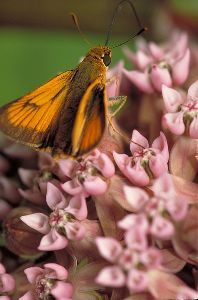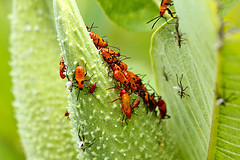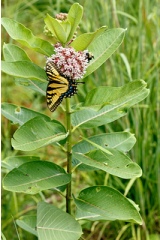Interactions with other organisms
Since
the common milkweed has a vast geographical and ecological range
throughout North America, there are many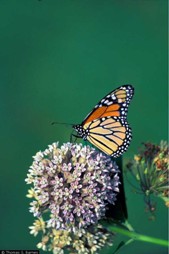 organisms it comes in contact with. One organism that common
milkweed has a relationship with is the
monarch butterfly. In the spring, adult monarchs lay eggs on
many species of milkweed plants
organisms it comes in contact with. One organism that common
milkweed has a relationship with is the
monarch butterfly. In the spring, adult monarchs lay eggs on
many species of milkweed plants
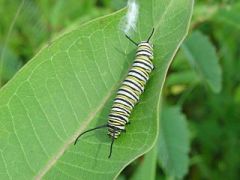 including Asclepias syriaca.
The eggs hatch and become caterpillars as we know them, which is the
larval stage of the monarch butterfly. The caterpillar spends its
life on the plant; it will eat the leaves in order to undergo rapid
growth. Milkweed is the only plant it relies on. To reach the adult
form, the caterpillar forms into a chrysalis on the milkweed plant
and will eventually reach the adult butterfly stage. This whole
process occurs in about one month. The adult butterfly will continue
to feed on the milkweed plant, but it now will eat the flowers
rather than the leaves(National Parks
Service). Since milkweed is toxic, the butterfly is protected
from predators by eating the plant. This interaction can be seen in
the pictures on this page. Another species the monarch butterfly
interacts with is
hot peppers. Read more about the monarch butterfly and
milkweed at
www.nps.gov/
or
monarchlab.org
including Asclepias syriaca.
The eggs hatch and become caterpillars as we know them, which is the
larval stage of the monarch butterfly. The caterpillar spends its
life on the plant; it will eat the leaves in order to undergo rapid
growth. Milkweed is the only plant it relies on. To reach the adult
form, the caterpillar forms into a chrysalis on the milkweed plant
and will eventually reach the adult butterfly stage. This whole
process occurs in about one month. The adult butterfly will continue
to feed on the milkweed plant, but it now will eat the flowers
rather than the leaves(National Parks
Service). Since milkweed is toxic, the butterfly is protected
from predators by eating the plant. This interaction can be seen in
the pictures on this page. Another species the monarch butterfly
interacts with is
hot peppers. Read more about the monarch butterfly and
milkweed at
www.nps.gov/
or
monarchlab.org
http://commons.wikimedia.org/wiki/File:Monarch_butterfly_larvae_on_common_milkweed_lea.jpg
http://plants.usda.gov/java/largeImage?imageID=assy_004_avp.tif
Many other critters, such as the Delaware skipper, milkweed beetles, and bumble bees can also be found on milkweed. Some of them, such as the bees, pollinate milkweed.
http://commons.wikimedia.org
http://www.flickr.com/photos/
http://www.flickr.com/photos/
/wiki/File:Delaware_skipper
tgpotterfield/7742651340/
gpotterfield/7742646616/in/photostream/
_on_common_milkweed.jpg
One study found that grasses that grew in close association with
milkweed limited milkweed’s growth due to competition for soil
resources and competition for sunlight to perform photosynthesis.
Also, at the same time, the milkweed was in contact with a beetle
that ate at the roots of the plant which caused shortages in the
growth during the early part of the growing season
(Agrawal, 2004). This study shows that
there are organisms that can inhibit the success of Asclepias
syriaca, but from other studies, we also know that milkweed has
some negative effects on other organisms. You can read about the
toxin found in milkweed on the facts page.
Next, visit the fun
facts page or return
home.
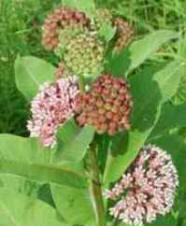
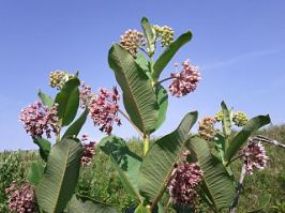 wikimedia
wikimedia